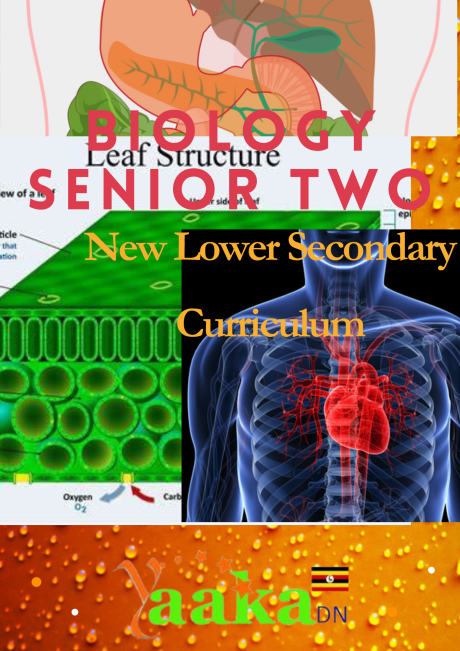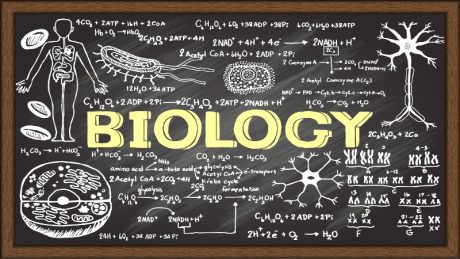114
SENIOR THREE BIOLOGY SENIOR THREE BIOLOGY is for all students doing biology and the student taking it should have some knowledge …
SENIOR THREE BIOLOGY
SENIOR THREE BIOLOGY is for all students doing biology and the student taking it should have some knowledge about biology of senior one and two to make it easy for the person to understand it. Under this course with topics like; Respiration, Gaseous exchange,Excretion, Homeostasis, Co-ordination and Locomotion.Course Currilcum
- BIO3: GASEOUS EXCHANGE Details 1 year
- This is the exchange of respiratory gases between the organism and the environment. It takes place across specialized surfaces called respiratory surfaces
- BIO3: TISSUE RESPIRATION Details 1 year
- This is the breakdown of food substances to release energy. It occurs with the help of enzymes. The major food respired (respiratory substrate) is a carbohydrate (glucose). All other compounds are converted into a carbohydrate before they are respired.
- BIO3: EXCRETION AND OSMOREGULATION Details 1 year
- Under this Unit will shall understand Excretion and Osmoregulation as the removal of waste products of metabolism from the body. Most of the waste products are toxic when allowed to accumulate in the body.
- BIO3: HOMEOSTASIS Details 1 year
- This is the maintenance of a constant internal environment of the body. The internal environment of the body is composed of tissue fluids, which surround cells.
- BIO3: CO-ORDINATION AND CONTROL IN PLANTS Details 1 year
- This is the ability of an organism to detect and respond to changes in their internal and external environment. Coordination and control in plants is carried out by hormones. Plants lack the nervous system and information is carried by hormones especially auxins.
- BIO3: CO-ORDINATION IN ANIMALS Details 1 year
- All living organisms are sensitive to changes taking place within their surroundings. They detect the changes (stimuli) and respond to them appropriately.
- BIO3: CO-ORDINATION IN ANIMALS (GLANDS) Details 1 year
- These are tissues or organs that produce and secrete chemical substances. There are 2 types of glands i.e. endocrine and exocrine.
- BIO3: CO-ORDINATION IN ANIMALS (GLANDS) ASSIGNMENT 15, 00:00
- BIO3: SENSE ORGANS OR RECEPTOR ORGANS IN MAMMALS (THE EYE) Details 1 year
- These are organs that perceive the stimulus and change it into nervous impulse (transduction). Receptor organs are made up of cells called receptor cells.
- BIO3: SENSE ORGANS OR RECEPTOR ORGANS IN MAMMALS (THE EYE) ASSIGNMENT 10, 00:00
- BIO3: SENSE ORGANS OR RECEPTOR ORGANS IN MAMMALS (THE EAR) Details 1 year
- The ear has sensory receptors for hearing and balancing. These are mechano- receptors because they respond to pressure and gravity.
- BIO3: GROWTH AND DEVELOPMENT IN PLANTS Details 1 year
- Growth is defined as an irreversible or permanent increase in the size and dry weight of an organism. Growth in multicellular organisms is divided into 3 phases.
- BIO3: GROWTH AND DEVELOPMENT IN PLANTS ASSIGNMENT 14, 00:00
- BIO3: GROWTH AND DEVELOPMENT IN ANIMALS Details 11 months, 3 weeks
- In animals growth occurs throughout the body of the organism unlike in plants where growth is localized in specific areas called meristems. Most animals grow continuously until they reach maturity.
- BIO3: GROWTH AND DEVELOPMENT IN ANIMALS ASSIGNMENT 10, 00:00
- BIO3: LOCOMOTION IN ANIMALS Details 11 months, 3 weeks
- Locomotion is the movement of the whole organism from one place to another. Movement is the displacement of part of the body of an organism.
- BIO3: LOCOMOTION IN BIRDS Details 1 year
- Some birds like ostriches, kiwi, and emu move on their legs and cannot fly. However, majority of birds can fly
- BIO3: LOCOMOTION IN FISH Details 1 year
- As the caudal fin moves from side to side in water, it generates a thrust, which propels the fish forward.
- BIO3:LOCOMOTION IN MAMMALS Details 1 year
- Mammals possess endoskeleton on which muscles are attached. The muscles pull on the skeleton to effect Locomotion in Mammals. The skeleton is made up bone and cartilage.
- BIO3:LOCOMOTION IN MAMMALS (JOINTS) Details 1 year
- Under Locomotion in Mammals a Joint is a place where two or more bones meet. The bones are connected together by ligaments to allow movement.
- BIO3: LOCOMOTION IN MAMMALS (MUSCLES) Details 1 year
- Under Locomotion in Mammals, Muscles are bundles of elongated cells enclosed in a sheath of connective tissue. When stimulated, the muscles contract to shorten.
- BIO3:LOCOMOTION IN MAMMALS (APPENDICULAR SKELETON) Details 1 year
- Under locomotion in Mammals, Appendicular skeleton is the skeleton of limbs and limb girdles. There are four limbs and two girdles.






